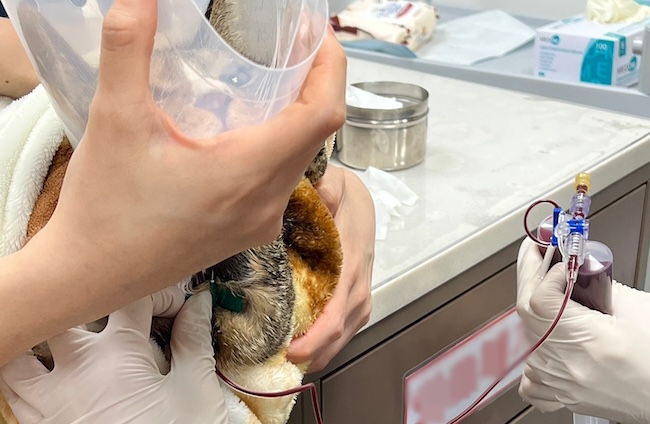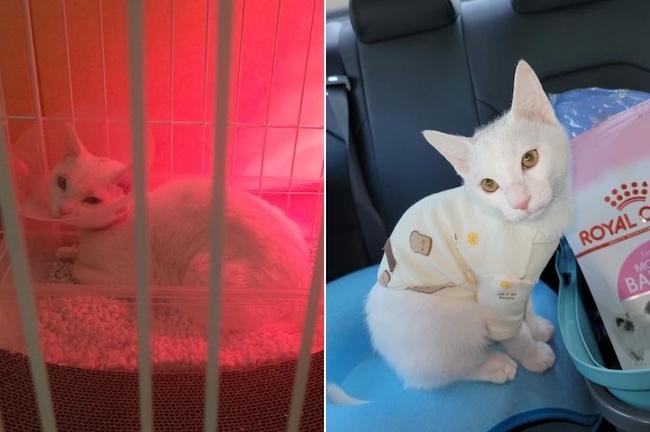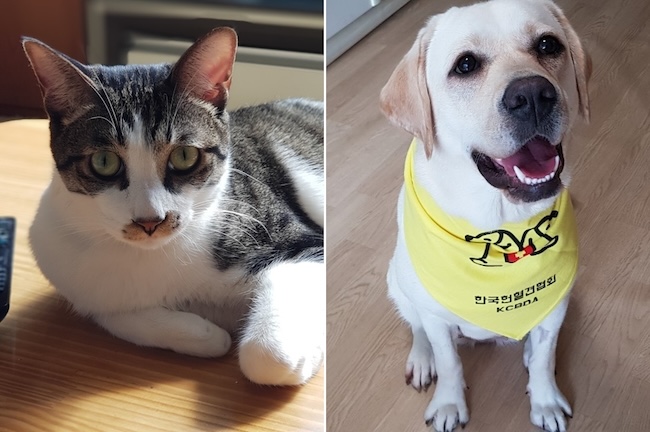
A cat is donating blood. (The image provided by Son Ji-hee, director of VIP Animal Medical Center Cheongdam)
SEOUL, Nov. 28 (Korea Bizwire) – With an increasing number of South Koreans embracing pet ownership, particularly of dogs and cats, the demand for blood to treat ailing pets has surged. Similar to humans, animals often require blood transfusions during critical moments.
Nevertheless, controversy surrounds the use of blood donor animals, specifically those bred solely for providing blood to others. This practice is not only viewed unfavorably from an animal rights perspective but also lacks regulation due to the absence of relevant laws.
While the culture of pet blood donation is not firmly established in Korea, there is a well-organized network for dog blood donation facilitated by the Korean Blood Donor Dog Association, dog communities, and veterinary hospitals’ blood donation programs.
In contrast, cat participation in blood donation remains relatively low. Cats, being more sensitive to their environment than dogs, often require general anesthesia for blood donation, resulting in elevated risks and added burdens for pet owners familiar with their cats’ habits.
Moreover, the efficiency of cat blood donation faces challenges. Unlike a single donation from a large dog that can save the lives of several small dogs, more cats are needed to contribute, and cat blood has a shorter shelf life.
In cases of feline transfusions, dependency on mutual acquaintances or donor cats becomes crucial due to the limited availability. The primary supplier of dog and cat blood to veterinary clinics nationwide is a private company, the scale of which remains undisclosed. This company faced legal scrutiny last year for operating without a required manufacturing license under the Pharmacy Act for over two decades.
An official from the cat blood donation and transfusion center highlighted the critical impact of a blood bank’s sudden cessation of blood supply, resulting in treatment difficulties and, tragically, the death of cats unable to receive timely blood transfusions.
While concerns about the well-being and treatment conditions of blood donor cats persist, some argue that their existence is necessary to save animals in critical condition. Consequently, pet owners and experts suggest that while completely eliminating blood donations from cats may be challenging, efforts should focus on increasing the proportion of blood donations from cats to reduce reliance on feral cats managed by blood banks.
Kim Hyung-jun, director of Baeksan Animal Hospital, which operates a cat blood donation center, emphasized the humanitarian perspective, stating that increasing cat blood donations is preferable to maintain a balance between supply and demand, acknowledging that the current reliance on blood banks managing feral cat blood alone is insufficient.
Ashley Song (ashley@koreabizwire.com)








